
With all the controversy that has now arisen surrounding the Paris Agreement, climate change has become a hot button issue. While many debate the science behind the concept of Global Warming, one thing has become clear. The weather is getting hotter, the ice is melting and resources are running out.
The hunt for sustainable sources of energy and resources continues, but the good news is, these efforts have had several great results. Many companies and entire cities across the globe have begun to implement green programs to help restore our planet to at least close to her former glory.
Like the company Lacoste, who have temporarily changed their logo to the images of ten endangered species in support of the “Save the Species” Campaign. Much like the efforts of Lacoste, here are 10 fantastic Go-Green initiatives from around the world that will surprise and inspire you!
1. The Green Buildings In Chicago, Illinois

Chicago is one of the cities leading the world in environmentally friendly programs and has over 295 Green projects with Certification under LEED (Leadership in Energy and Environmental Design).
The Chicago Center for Green Technology, which has been non-operational but still occupied since 2014, was the first major step toward the green path and received the highest LEED rating a building can get.
A Green Permit Program was also later initiated to speed up the process of getting permits and offered the possibility of reduced fees for green projects. It looks like Green is the new trending color.
2. Solar Energy Projects in California
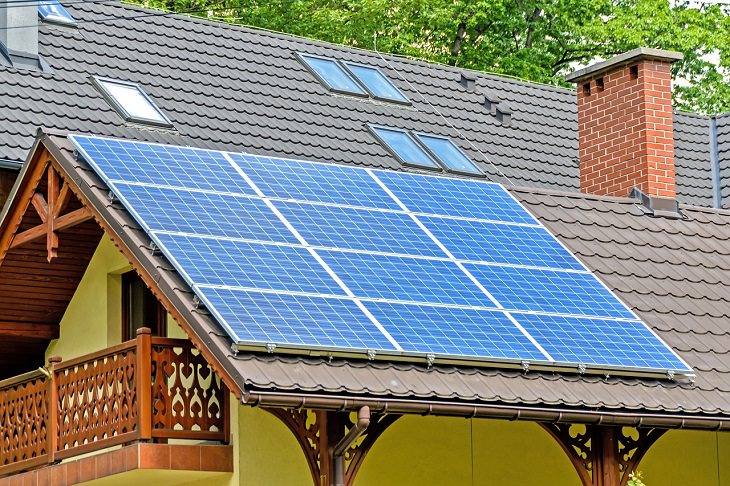
If there ever was a perfect state for channeling the power of the sun for energy, it has got to be the Sunshine State.
This state is home to Solar City, a Tesla subsidiary, and Sunrun, two major companies that provide solar installation services for the whole country. It is also home to Sun Power, the manufacturer of the most efficient solar panels in the world.
California also has the best net metering programs, that allow you to store solar energy for use at night, and a Self Generation Incentive Program, which subsidizes the cost of solar batteries. This state has made solar energy not only the most efficient form of energy but also the most cost-effective.
The current goal for California's Electric Utilities companies is to ensure that by 2020, 33% of their power will be produced by renewable energy. True to its (nick)name, the main source of this renewable energy is likely to be solar energy.
3. Alternative Transportation in Portland, Oregon
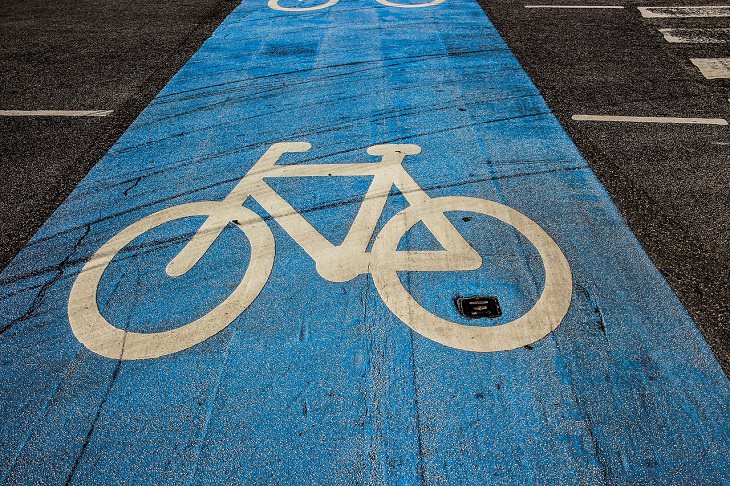
Portland is working towards saying goodbye to traffic jams and pollution, both air and noise. In an effort to make the city safe for more people to ride bicycles, dedicated bike routes have been created.
This city is also the birthplace of the Bicycle Transportation Alliance, now known as the Street Trust. This organization promotes bicycle advocacy and aims to create communities that make frequent travel bicycle-friendly.
More new bike paths are in the process of being made, courtesy of the Portland Bureau of Transportation.
4. The Eco-City Project in Hamburg, Germany
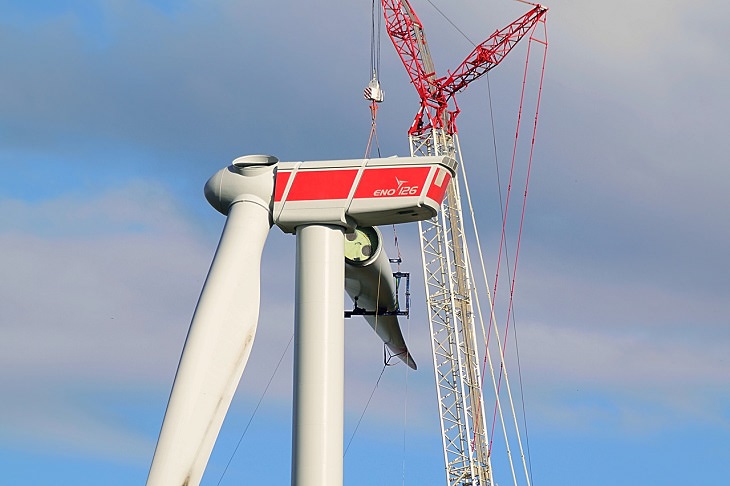
This project has been designed to be a sustainable sizeable community, with offices, hotels, walkways and other amenities, all surrounding beautiful open-air plazas. The very construction of this city has been planned in a manner that reduces energy consumption by 30%.
The Eco-City is being built to be as energy efficient as possible, making use of solar water heating systems and high-rise wind turbines which has been built to generate at least 10% of the major power of the city.
The goal for this project has been set to reach the highest ranking for the GSBC (German Sustainable Building Certificate), BREEAM (Building Research Establishment Environmental Assessment Method, launched in the UK), and LEED Certification.
5. Cool Pavements in America
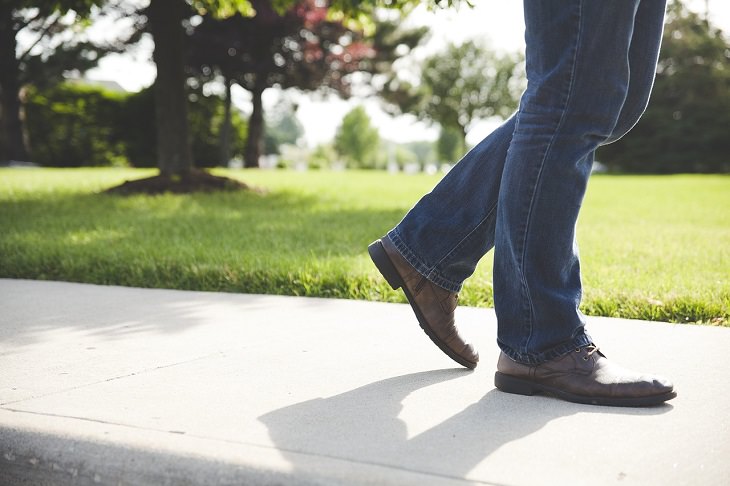
This is a new concept that is beginning to inspire projects all across the country. The usual dark rooftops and pavements used to absorb a large percentage of sunlight which can add to the heat in the atmosphere.
Using a clear binder or certain surface coatings can make solar reflective “cool” pavements, that don’t absorb as much heat. The cost for the materials required to make these payments can be on the higher side and the collection of materials to build it can be a challenge.
However, California and Arizona are in the process of implementing a few of these reflective surfaces and are working towards further development of the design. Research has shown that making and maintaining these cool pavements could require the use of up to 6 times the energy used to produce the slurry seal commonly used to make roads and pavement.
6. Lilyfield Housing Redevelopment in Sydney, Australia
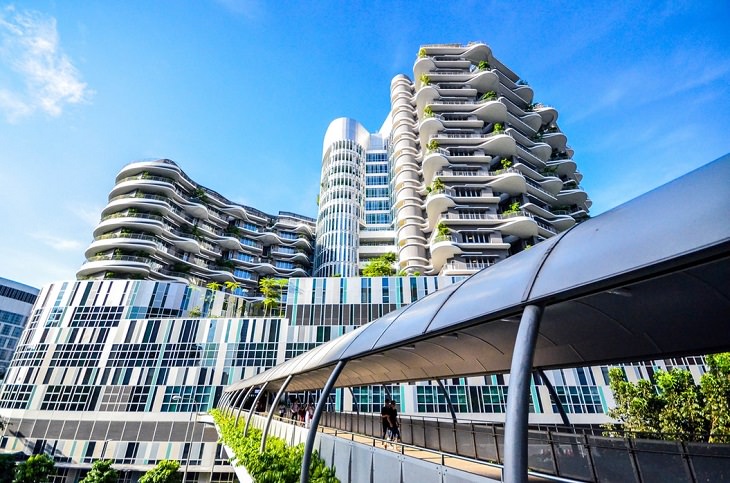
This project was launched and opened in February 2011, and received a 5 Green Star Rating. Green Star is the equivalent of the LEED certification for the development of commercial and government buildings in Australia.
That makes the Lilyfield Project the first social housing development to be brought forward by the Green Building Council of Australia under the banner of the Green Star ratings. It has somewhere between 60-80 apartment units, varying in size.
The complex has also been built in a prime location for access to public transport and made bicycle friendly to reduce the need for large car parking lots. It also offers an efficient outdoor lighting system which only uses 2.5% of the total electricity produced in Australia, and uses solar water heating systems and Photovoltaic panels.
7. Smog-Eating Building in Mexico City, Mexico

(The Manuel Gea González Hospital, Mexico City, Mexico, with "Smog-Eating" Facade - Image Courtesy of Elegant Embellishments)
In an effort to promote the health infrastructure of the country, the Ministry of Health of Mexico funded this $20 billion dollar Green project. Of course, the building wasn't built to literally eat smog, but the Manuel Gea González Hospital, found in Mexico City, was given some real upgrades.
The technology was discovered and developed by a Research and Design manufacturing studio that concentrates on initiatives for environmentally friendly buildings, called Elegant Embellishments. Using a coating of photocatalytic titanium dioxide on thermoformed shells, a building facade was designed.
This lovely and functional white facade now covers over 2500 square meters of the building. The coating has a unique effect, whereby it neutralizes the effects of air pollution (from the thousands of passing cars each day) when it reacts with light.
A similar type of system was also exhibited in Milan’s Palazzo Italia.
8. SolaRoad in Krommenie, Netherlands
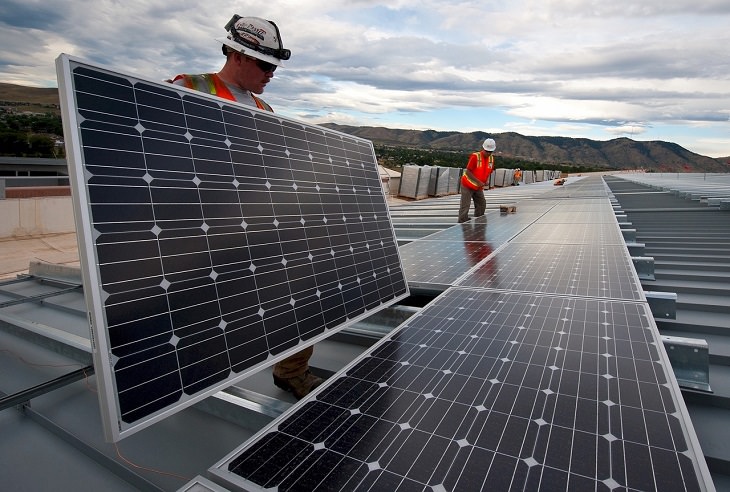
The brainchild of multiple organizations, after the development of the prototype in 2010, further projects were underway by 2011. These projects use various developments in solar technology to create bike paths made from solar panels.
In October 2014, the first official SolaRoad was opened in Krommenie, about 72 meters (which is 236 feet) in length. This path as it stands is a connecting point between two suburbs.
If and when the path is extended, it could potentially be used to power a number of suburban homes. This pathway has not only been a step forward in alternative transportation, but it's also paving the way to energy consciousness and healthier infrastructure.
No wonder a couple from Idaho, who first proposed the idea of solar paneled roads, raised $2 million dollars through crowdfunding alone!
9. KK Plastic Roads in Bangalore, India

Our introduction to what could be the road to the future. Yes, pun absolutely intended.
K.K Plastic Waste Management, a company based out of the city of Bangalore has created an incredible new innovative way to turn plastic waste into roads. Started by two brothers, Amjad and Ahmed Khan, their research into alternate uses of plastic led them to the discovery that plastic and bitumen (also commonly known as asphalt), are very similar substances.
Not only does this work towards reducing the amount of waste piling up in landfills across the country, it also assists in the mending and strengthening of battered roads covered with cracks and holes from years of ordinary wear and tear.
They laid down their first road in 2002, after getting approval from the Central Road Research Institute, Delhi.
10. Zero Waste Fashion

Who says environmental consciousness can’t be fashionable?
This interesting concept was first theorized and implemented by Dr. Mark Liu, Ph.D., who began looking into the concept in 2006, as a part of his thesis while completing his Masters of Textiles Futures.
The idea behind it was to minimize the amount of fabric wasted while making a garment through a seemingly simple method of restructuring the excess fabric in a pattern that would suit the design.
The original aim was to ensure a minimum of 15% material saving per garment, which would be beneficial both commercially and environmentally. According to Dr. Liu, the philosophy behind zero-waste designs heavily influenced the aesthetic appeal of the designs themselves.
His first line of zero-waste fashion apparel was debuted at Esthetica, a project for Eco-Fashion, in the 2008 London Fashion Week. His collections have since made numerous other appearances at LFW and were even on display in museums all across the world.
The company Tonle is now a major producer of zero-waste fashion apparel.
Related Articles:
14 Smart Solutions to the Global Plastic Problem
15 Small But Very Significant Ways to Help the Environment